wikiHow is a “wiki,” similar to Wikipedia, which means that many of our articles are co-written by multiple authors. To create this article, 37 people, some anonymous, worked to edit and improve it over time.
There are 10 references cited in this article, which can be found at the bottom of the page.
This article has been viewed 1,077,635 times.
Learn more...
Part artists and part scientists, embalmers provide a necessary service in funeral homes by sanitizing, preserving, and restoring the deceased to a more life-like appearance. It's a delicate and complex procedure. Read on to learn more about the world of embalming.
Steps
Preparing the Body
-
1Make sure the body is face up. If the body is front-side down, gravity will pull the blood down to the lowest parts of the body, particularly the face. This can discolor and bloat the facial features, making it more difficult to create a life-like appearance for the viewing.[1]
-
2Remove any clothing that the person is wearing. You will need to see the skin for signs that embalming is working, so the body will remain uncovered throughout the procedure. Also remove any IV needles or catheters that are in place.[2]
- Typically, you'll need to catalog any property found on the person, as well as any cuts, bruises, or other discolorations at this time on your embalming report. This will also be used to document the procedure and chemicals used in the process. The report acts as insurance if the family chooses to sue the funeral home for any reason.
- Respect the body at all times. Use a sheet or towel to cover the genitals, and don't leave tools laying around on it while you're working. Assume the family may pop in at any moment.
Advertisement -
3Disinfect the mouth, eyes, nose, and other orifices. Powerful disinfectant is used to clean the features, inside and out.
- Inspect the deceased in regards to the type of fluid you will need. Some embalmers will use this opportunity to mix all the fluid they'll need for the procedure, to get it ready. Usually 16 ounces of fluid with 2 gallons (7.6 L) of water is a good dilution.
-
4Shave the body. Typically the face is shaved at this point, as you would shave yourself. Men are usually always shaved, though women and children are also often shaved to remove any stray hairs or "peach fuzz" from the face.[3]
-
5Break the rigor mortis by massaging the body. Massage the major muscles groups to relieve the tension and move stiff joints to loosen them up. If the muscles are tight, they will increase extra vascular pressure, diverting embalming fluid away from where it needs to go.[4]
Setting the Features
-
1Close the eyes. Use great care in setting the eyes. Typically, the eyelids tend to sag back in its socket, so a small piece of cotton is placed between the lid and the eye to round it out. In some cases, a plastic eye cap is used for this purpose.[5]
- Eyelids are never sewn shut but may be glued shut in some cases.
- The features need to be set before the embalming fluid is introduced, because that fluid will "set" the body fairly rigidly, making it difficult to do it afterward.
-
2Close the mouth and set it naturally. One of two methods is typically used to set the mouth.
- Sometimes, the mouth is sewn shut using suture string, passing a curved needle through the jaw under the gums and back up through the septum. Avoid tying the string too tightly to give the jawline a natural appearance.[6]
- An injector gun is also commonly used in conjunction with a mouth form. Like a mouthguard or a dental prosthetic, the mouth form holds the jaw together according to the natural bite and alignment of the jaw. This method often includes less room for human error.
-
3Moisturize the features. A small amount of cream should be used on the eyelids and lips to keep them from drying out, giving them a natural and lifelike appearance.[7]
Embalming the Arteries
-
1Choose your incision site. The arteries are embalmed by simultaneously introducing embalming fluid (a mixture of formaldehyde, other chemicals, and water) into an artery while draining the blood from a nearby vein or from the heart. It takes about two gallons of fluid to embalm a typical body.
- On men, the incision is made near the base of the SCM muscle and the clavicle. For females or younger people, the femoral site is most popular.
-
2Make your incision. Clean the vein point off, create an entrance point, and insert the drain tube towards the heart. Tie a ligature around the lower side of the tube.
- Do the same for the artery except insert the cannula instead of a drain tube. Place the cannula forceps on the artery locking the cannula in place. Use the small locking forceps to clamp off the upper side of the artery and restrict the flow.
-
3Turn on your embalming machine and distribute the fluid. While the embalming is taking place, wash the body with a good germicidal/antibacterial soap and be sure to check for drainage while massaging the limbs to push blood out and embalming solution in.[8]
- When the fluid enters the arteries, pressure will build throughout the veins, which means the fluid is moving throughout the body. You'll notice the veins bulging somewhat. Open the jugular drain tube periodically to allow blood to escape and relieve the pressure.
-
4Slowly decrease the pressure. When you have about 20% of your solution left, turn off the machine and reverse your cannula to the other side of the artery you chose to inject. This will embalm the part that was blocked by the cannula previously. Be sure to turn down the pressure, as the fluid only has to go a short distance, and you don't want to "pop the eyes."
- In the case of the femoral, this will embalm the lower leg. In the case of the right common carotid, this will embalm the right side of the head.
-
5Finish. When you've embalmed to your satisfaction, or run out of fluid, turn off the machine, remove the cannula, and tie off the veins and arteries you used. Suture the incisions closed. Use sealing powder to ensure there is no leakage.
Embalming the Cavity
-
1Use a trocar to aspirate the organs. Now that the arteries have been cleaned, you need to clean the inside of the organs before bacteria and gas builds up and excess fluids purge from the nose or mouth.[9]
-
2Aspirate the chest cavity. Insert the trocar 2 inches (5.1 cm) to the right and 2 inches (5.1 cm) superior to the umbilicus. Clean out the hollow organs such as the stomach, pancreas, and small intestine.
-
3Aspirate the lower cavity. Remove the trocar, turn it around, and insert it into the lower body, aspirating the contents of the large intestine, bladder, and in the case of females, the uterus. The anus and vagina are sometimes packed with cotton to avoid seepage.[10]
-
4Inject cavity fluid into the torso. Cavity fluid is usually 30% formaldehyde, and the gravity injection method is typically used to push the cavity fluid into the hollow organs, sterilizing and preserving them.[11]
- Make sure you get both the upper and lower organs. This step is crucial in preventing "purge."
-
5Remove the trocar and close the hole with a trocar screw. Clean out your trocar and put it away.[12]
Casketing the Body
-
1Wash the body thoroughly. Using the same disinfectant used earlier, clean the body thoroughly to remove any blood or other chemicals left behind by the embalming process. Use delicacy and care in this process.[13]
-
2Touch up the features. Lifelike makeup will be applied to the face, the fingernails will be clipped, and the hair should be styled and groomed.[14]
-
3Dress the body. Generally, the deceased's family will choose the clothes to be worn in the casket. Dress the body carefully and appropriately.[15]
- Sometimes plastic underwear is used to protect especially leaky bodies.
-
4Place the body in the casket. Arrange the body peacefully. Consult the family for any advice or further instructions regarding the presentation.
Community Q&A
-
QuestionHow much money do you make as an embalmer?
 wikiHow Staff EditorThis answer was written by one of our trained team of researchers who validated it for accuracy and comprehensiveness.
wikiHow Staff EditorThis answer was written by one of our trained team of researchers who validated it for accuracy and comprehensiveness.
Staff Answer wikiHow Staff EditorStaff AnswerThe amount of an embalmer's salary depends on the level (beginner through to senior), the specific employer and local pay conditions. However, a rough estimate is between USD$30,000 and $50,000 per year (pre-tax).
wikiHow Staff EditorStaff AnswerThe amount of an embalmer's salary depends on the level (beginner through to senior), the specific employer and local pay conditions. However, a rough estimate is between USD$30,000 and $50,000 per year (pre-tax). -
QuestionDo you have clothes on when you are cremated?
 wikiHow Staff EditorThis answer was written by one of our trained team of researchers who validated it for accuracy and comprehensiveness.
wikiHow Staff EditorThis answer was written by one of our trained team of researchers who validated it for accuracy and comprehensiveness.
Staff Answer wikiHow Staff EditorStaff AnswerNormally the body is dressed before it is cremated. You can request specific clothes if you wish, talk to your family and/or the funeral director about your preferences.
wikiHow Staff EditorStaff AnswerNormally the body is dressed before it is cremated. You can request specific clothes if you wish, talk to your family and/or the funeral director about your preferences. -
QuestionWhat does an undertaker do to the body?
 wikiHow Staff EditorThis answer was written by one of our trained team of researchers who validated it for accuracy and comprehensiveness.
wikiHow Staff EditorThis answer was written by one of our trained team of researchers who validated it for accuracy and comprehensiveness.
Staff Answer wikiHow Staff EditorStaff AnswerThe undertaker prepares the body for the funeral and for burial. A body will only be embalmed if the family requests this, and if so, the body will be embalmed by a mortician. The undertaker dresses the body (in accordance with the family’s requests) and places it into the coffin or casket that the family has chosen. Then they take the body to the place where the funeral is being held. The undertaker is guided by the family’s wishes, religious requirements and cultural needs.
wikiHow Staff EditorStaff AnswerThe undertaker prepares the body for the funeral and for burial. A body will only be embalmed if the family requests this, and if so, the body will be embalmed by a mortician. The undertaker dresses the body (in accordance with the family’s requests) and places it into the coffin or casket that the family has chosen. Then they take the body to the place where the funeral is being held. The undertaker is guided by the family’s wishes, religious requirements and cultural needs.
Warnings
- Formaldehyde is a possible carcinogen. Take precautions to minimize exposure.⧼thumbs_response⧽
- Embalming a body is illegal if you do not have a license, PPE (personal protective equipment) as required by OSHA, and permission to embalm from the executor.⧼thumbs_response⧽
- Working with the insides of a human body can expose you to biohazardous material. Make sure you discard disposable objects that contact the body in a clearly marked biohazard container and take suitable precautions to protect yourself.⧼thumbs_response⧽
Things You'll Need
- Certification and licensure in compliance with local ordinances and state laws.
- A table that can hold a person, although the floor works well if you want to be on your knees for an hour.
- Arterial tubes, or cannula, are inserted into major arteries into which you can inject embalming solution.
- A scalpel
- Scissors, for cutting important stuff.
- A roll of medical-grade string, called ligature.
- A curved needle for sewing incisions.
- A large sink into which blood can be drained and water can be accessed.
- A water aspirator, or Hydro Aspirator, to create negative pressure. It is attached to the faucet of the sink, and has a hose coming from one of it's openings that leads to:
- A trocar; this is a long, sword-like needle that is connected to the hydroaspirator which is used to puncture and aspirate the hollow organs which embalming fluid cannot reach arterially.
- A few bottles of mixed embalming solution; formaldehyde is most common, but there are substitutes.
- An aneurysm needle/hook. This is a metal tool with a flat handle and a long point that bends 90 degrees at the end.
- Cotton, cotton, and more cotton.
- Eye caps (concave round disks that hold the eyes shut from underneath.
- There are many other tools that are useful to embalmers, but they are for the most part optional. Even some of the tools mentioned are optional.
References
- ↑ https://www.ranker.com/list/embalming-facts/lea-rose-emery
- ↑ https://www.funerals360.com/blog/burial/the_truth_about_embalming/
- ↑ https://www.theguardian.com/commentisfree/2013/oct/24/embalmer-for-14-years-ask-me-anything
- ↑ https://cremationinstitute.com/the-embalming-process/
- ↑ http://mentalfloss.com/article/80944/17-behind-scenes-secrets-funeral-directors
- ↑ http://listverse.com/2007/11/08/the-5-stages-of-embalming/
- ↑ https://funerals.org/what-you-should-know-about-embalming/
- ↑ https://funerals.org/?consumers=embalming-what-you-should-know
- ↑ https://funeralcourse.com/wp-content/uploads/2016/04/FSA-Embalm-3-WEB.pdf
- ↑ https://funeralcourse.com/wp-content/uploads/2016/04/FSA-Embalm-3-WEB.pdf
- ↑ https://funeralcourse.com/wp-content/uploads/2016/04/FSA-Embalm-3-WEB.pdf
- ↑ https://funeralcourse.com/wp-content/uploads/2016/04/FSA-Embalm-3-WEB.pdf
- ↑ https://www.theguardian.com/lifeandstyle/2008/feb/16/healthandwellbeing.weekend2
- ↑ https://www.theguardian.com/lifeandstyle/2008/feb/16/healthandwellbeing.weekend2
- ↑ https://www.theguardian.com/lifeandstyle/2008/feb/16/healthandwellbeing.weekend2
About This Article
Once you have prepared the body for embalming, make an incision at the site where you intend to introduce the embalming fluid. Insert a drain tube into a vein pointing towards the heart, and insert the cannula for the embalming fluid into an artery, holding it in place with small locking forceps. Turn on the embalming machine and let it run on regular pressure until you only have about 20% of the embalming solution left, then turn the cannula facing the other direction and turn the machine to low pressure while you finish embalming the body. To learn about how to make touch-ups or dress the body when you're finished, keep reading the article!

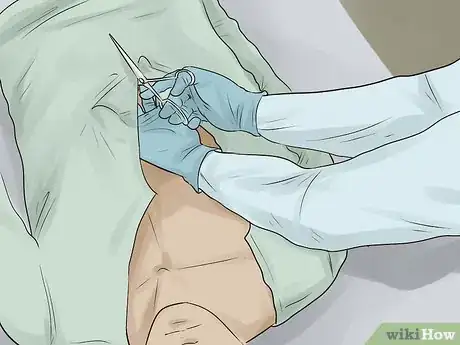
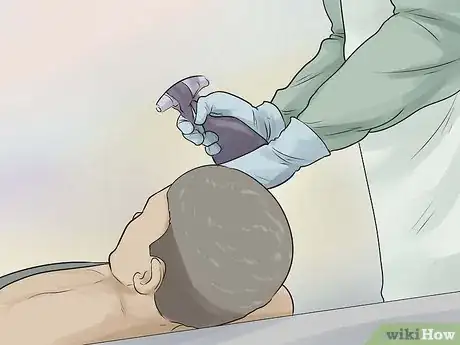
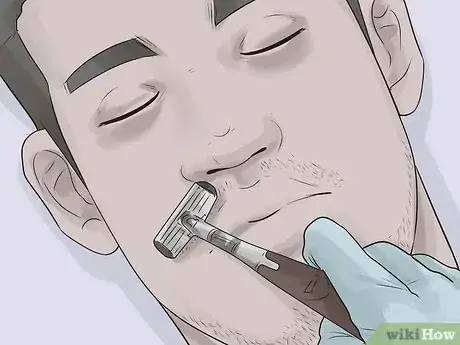
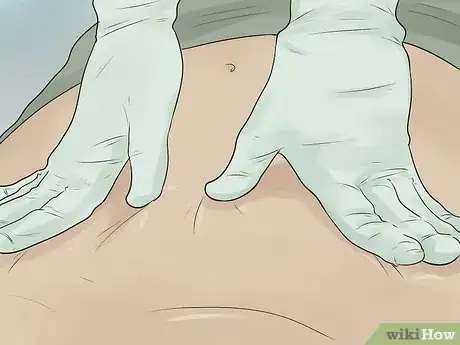
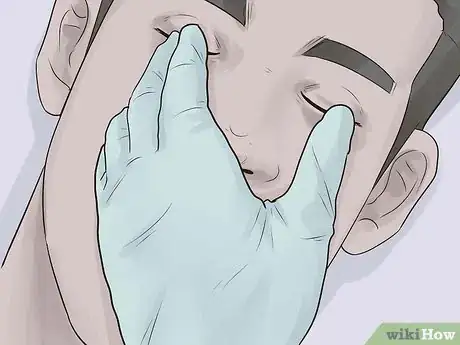
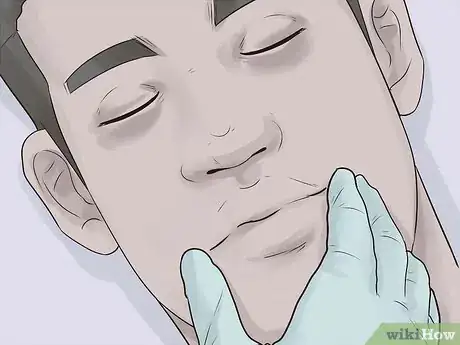
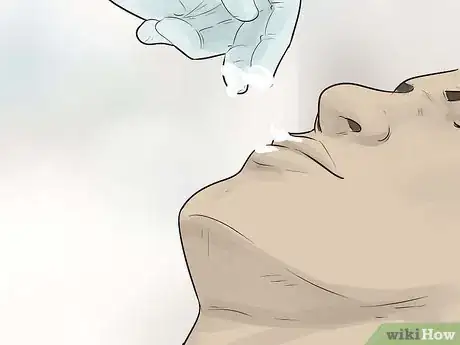


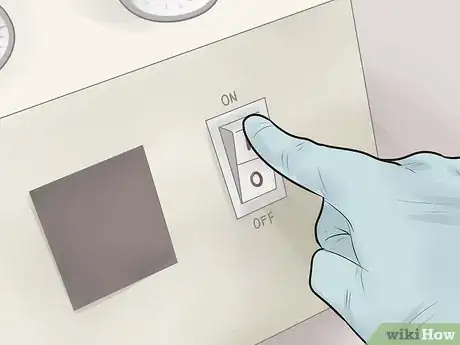
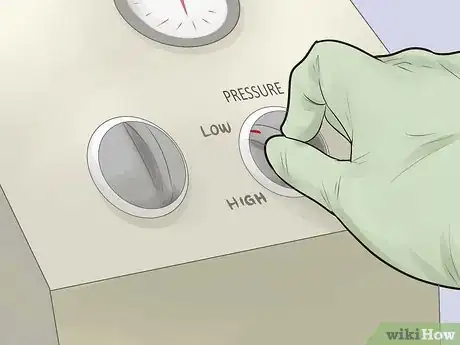
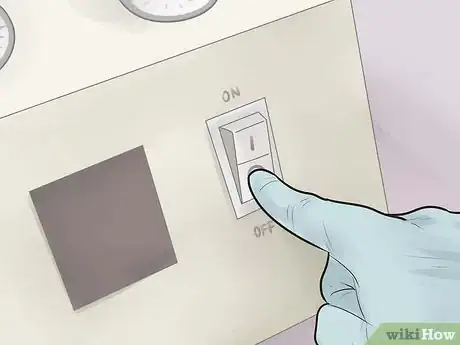

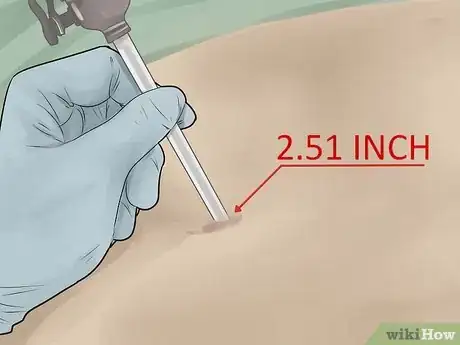

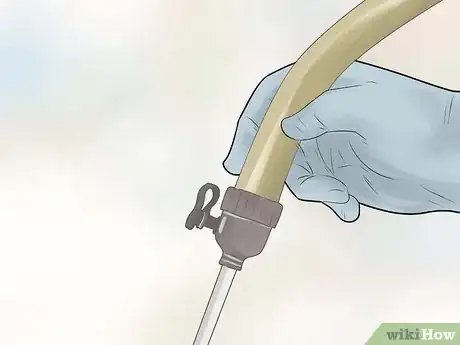
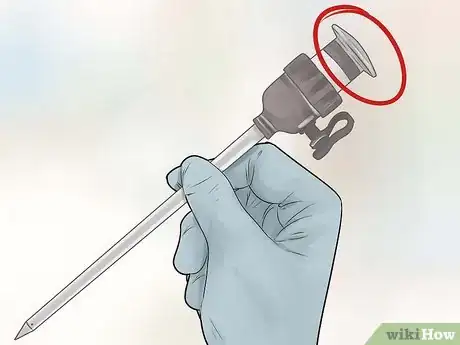








-Step-9.webp)







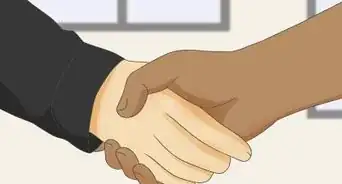














































Medical Disclaimer
The content of this article is not intended to be a substitute for professional medical advice, examination, diagnosis, or treatment. You should always contact your doctor or other qualified healthcare professional before starting, changing, or stopping any kind of health treatment.
Read More...